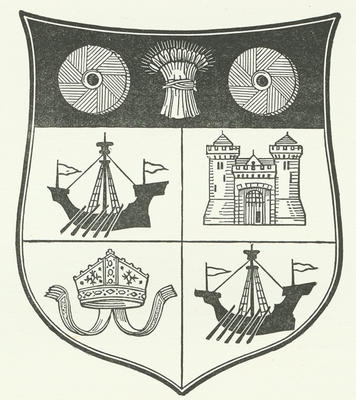
The coat of arms of the Burgh of Partick, approved by the Lord Lyon in 1872.
Two of the quarters contain an image of a lymphad, or galley, probably a reference to the shipbuilding industry. The castle and bishop's mitre are thought to represent Partick Castle and the Bishops' mansion. At the top, the wheatsheaf and millstones hark back to the days of Partick's rural industries, and the mills on the banks of the River Kelvin.
Partick Castle was built for George Hutcheson in 1611, on the west bank of the Kelvin. Its last traces disappeared in the 1830s. It is believed that the Bishops of Glasgow had a residence on the site before the Reformation.
Partick became a burgh in 1852, having evolved from a rural village to an industrial town during the previous twenty years, following the arrival of shipbuilding. The burgh fought off several attempts at annexation by neighbouring Glasgow, until it became part of the city in 1912.
Reference: Mitchell Library, 477590
Reproduced with the permission of Glasgow City Council, Libraries Information and Learning
Keywords:
annexations, bishops, boundary extensions, burghs, castles, coats of arms, galleys, heraldry, lymphads, millstones, mitres, Partick Castle, River Kelvin, shipbuilding, wheatsheaves
You have 0 images in your photo album.